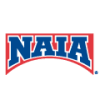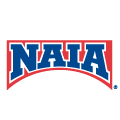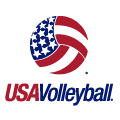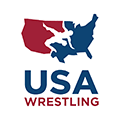Common College Recruiting Myths

The college recruiting process can get pretty complicated. It takes time and effort to stay up to date on all the latest college recruiting rules, important dates and deadlines that athletes and families should know in order to succeed.
Things get even more confusing because most families are going through this process for the first time and sometimes make decisions based on common college recruiting myths. That’s why NCSA has helped families navigate this complex process for over 20 years, helping more than 300,000 student-athletes commit to their college choice.
So, what are just some of these recruiting myths that athletes and families should keep in mind? Read on to find out.
Recruiting myths
Myth: College coaches will find you if you’re really good
Unless you’re a five-star athlete that is an elite, nationally noticed prospect, chances are slim that college coaches will line up to recruit you. To start, only about 7% of American high school athletes go on to play college sports. Additionally, college coaches are very busy and even when they are focused on recruiting, they are usually working with limited budgets and travel schedules.
Standout athletes will surely get recruiting exposure, but the vast majority of high school athletes will have to put in effort. That’s why it’s important to stay proactive in the college recruiting process. Even “normal” recruits can find their right college fit and get recruited if they put in the work, which includes reaching out to college coaches, updating their recruiting video, attending the right recruiting events and utilizing the NCSA recruiting network.





Myth: Your coach will take care of college recruiting for you
While getting recruiting help from your high school or club coach is always welcome, it’s not your coach’s job to get you recruited. Athletes and families should always stay proactive in the college recruiting process if they are committed to finding the right college fit and potentially securing an athletic scholarship.
One of the main reasons is simply because high school and club coaches are busy. Even if they are sincere in helping athletes get recruited, they have to split their time among each athlete. That’s not a lot of time available for a football coach who also teaches during the day and has family duties at home. The bottom line is that your recruiting success is up to you.
Myth: You should start the recruiting process junior or senior year
If you’re serious about getting recruited, your recruiting process should start long before junior year. For most athletes, freshman year of high school is a good time to start. College coaches are increasingly recruiting online and recruiting prospects earlier. In some sports, top prospects start receiving offers by the time they finish middle school. Most D1 colleges have contacted prospects and offered scholarships by the end of their sophomore year of high school.
Additionally, potential recruits should not wait until the offseason to start the recruiting process—it should be a year-round focus. That’s because it’s a year-round job for college coaches. By focusing on the offseason, potential recruits will limit their window while others take advantage of the recruiting attention from college coaches year-round.
Myth: Division 1 coaches can answer your phone calls anytime
In April of 2019, the NCAA D1 Council adopted rules to curb early recruiting and barred college coaches in most sports from picking up incoming phone calls until June 15th after sophomore year. Before then, the NCAA was pretty lax about when college coaches could pick up phone calls and listen to potential recruits, even during times that direct contact was not allowed.
For D1 men’s and women’s basketball, baseball and football, potential recruits can still call college coaches at any time and get a response. For other sports, potential recruits can try sending the college coach an email to stay on their radar until direct communication is allowed.
Myth: You can visit Division 1 coaches on unofficial visits anytime
While potential recruits looking to visit colleges at the D2, D3, NAIA and junior college levels can do so at any time and do not have a limit on number of visits, those taking an unofficial visit at a D1 college can’t have recruiting conversations with college coaches until August 1 of an athlete’s junior year.
Even though rules for unofficial visits are more lax than rules for official visits, D1 recruits need to keep this in mind. But they can still check out college campuses without having contact with coaches. College coach contact during unofficial visits is still allowed for D1 women’s basketball and D1 football.
Myth: Division 1 scholarships are always full rides
No, D1 scholarships are not always full rides. In fact, only six D1 sports are headcount sports, meaning that every awarded scholarship is a full ride: women’s basketball, men’s basketball, FBS football, women’s volleyball and women’s gymnastics.
Other sports fall into the equivalency sports category. These sports have a team scholarship limit and can break up scholarships into partial amounts. For example, a fully funded team with a limit of 12 full scholarships can give out half-scholarships to 24 athletes. While full rides are out there, it’s one of the common recruiting myths that they are always offered at the D1 level.
View athletic scholarships information for each sport.
Myth: If you don’t get an offer you can just walk on
While there is more than one way to get a walk-on offer—this includes being a preferred walk-on or an unrecruited walk-on—it is still a difficult task to walk on to a college roster. Some athletes think they can show up to tryouts and impress their way to a college roster spot, but that’s one of the more common recruiting myths. The truth is that most walk-on spots are reserved for recruits that were previously invited to try out during the recruiting process. Communication with college coaches is key, even for athletes who hope to walk on.
















